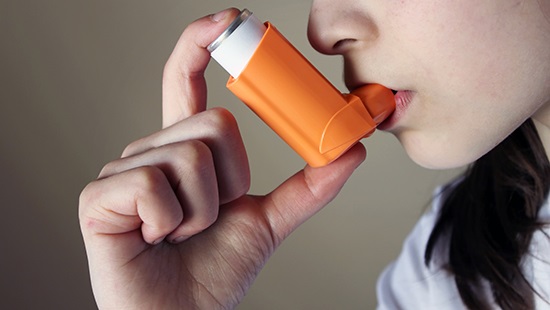Breathing Exercises for COPD

Is COPD leaving you out of breath? Simple exercises can strengthen the muscles you use to breathe stronger, making it easier for you to take in air and manage shortness of breath.
“When you’re short of breath, anxiety can increase and make it even harder to breathe,” says cardiac rehabilitation therapist Claudia Cavey, RN. “These exercises can help you stay relaxed when you feel your symptoms escalate and even prevent shortness of breath from occurring in the first place.”
Deep Breathing
Deep breathing can help your body take in more fresh air and prevent air from getting trapped in your lungs.
- Sit or stand in a comfortable position, with your elbows positioned slightly back. This position allows your chest to expand more fully.
- Take a deep breath and hold it for as long as you can.
- Let the air out and then cough strongly.
- Repeat these steps up to 10 times every hour.
Pursed Lip Breathing
This technique helps you slow your breathing and stay calm. It can be especially helpful before you start an activity or any time you feel short of breath.
- Breathe in through your nose, almost like you’re smelling something, for about two seconds. Use your abdominal muscles to help fill your lungs with air.
- Pucker your lips as if you’re about to blow out a candle and then breathe out slowly through your mouth. Breathe out twice as long as when you inhaled. Make a quiet hissing sound as you exhale.
- Repeat several times.
Diaphragmatic Breathing
Also known as belly breathing, diaphragmatic breathing helps strengthen the diaphragm — one of the most important muscles used for breathing. With COPD, air often gets trapped in the lungs and pushes on the lungs. As a result, people with COPD tend to use their neck, shoulder and back muscles more than the diaphragm when breathing.
- Lie on a flat surface. Make sure you support your head and bend your knees.
- Place one hand just below your ribs and the other in the middle of your chest over your breastbone.
- Breathe in slowly and deeply through your nose.
- Tighten the muscles just below your ribs and breathe out slowly through pursed lips. Tip: Use the hand you placed below your ribs to gently push in and up while you tighten your muscles.
- Repeat
This technique takes practice. Initially, you may tire when doing diaphragmatic breathing. Start off doing the exercise for 5 to 10 minutes, three or four times a day. Then, slowly increase the amount of time during each practice session. A good time to practice this is during TV commercials.
Controlled Coughing
Constant coughing can cause airways to collapse and make it incredibly hard to breathe. Controlled coughing, which takes place deep within the lungs, loosens and then carries mucus through the airways without leading to collapse. It also saves oxygen.
- Sit on a chair with both feet on the floor. Lean slightly forward.
- Fold your arms across your belly. Breathe in slowly through your nose.
- Lean forward and exhale, pressing your arms into your belly.
- Slightly open your mouth and cough two to three times. Make your coughs short and sharp.
- Gently and slowly inhale through your nose.
- Rest
This technique works best when you feel mucus in your airways or after you use bronchodilator medication (medication that opens airways). Make sure to drink water to keep hydrated and keep secretions loose.
-
Find a lung specialist in your area.

